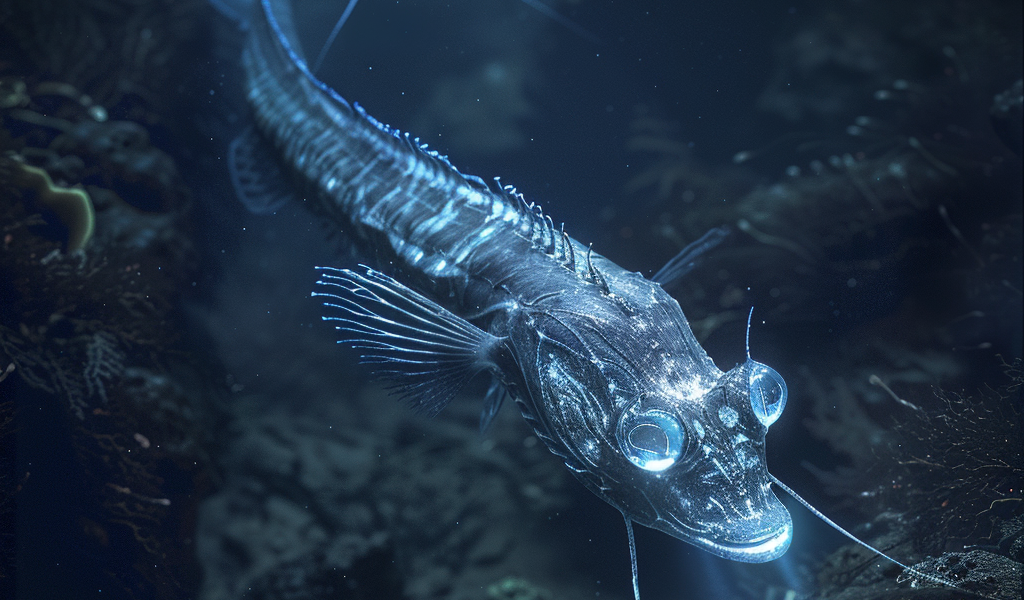Research Unveils Unique Adaptation in Male Dragonfishes for Mate Attraction
In a groundbreaking study published in the Royal Society journal Biology Letters, researchers from Boston College have revealed a fascinating adaptation in male dragonfishes that sets them apart in the animal kingdom. The study highlights how male dragonfishes, known for their predatory nature, develop larger eyes than their female counterparts as a strategy to find mates in the dark depths of the ocean.
Dragonfishes, which are small yet fierce predators, inhabit some of the most challenging environments on Earth. Their survival relies on a variety of adaptations, including the ability to produce bioluminescence. However, the study led by biologist Christopher P. Kenaley at Boston College indicates that male dragonfishes have taken a unique evolutionary path to enhance their chances of reproduction.
According to Kenaley, the lead author of the study titled “Sexually Dimorphic Eye-size in Dragonfishes, a Response to a Bioluminescent Signaling Gap,” the males’ larger eyes are specifically evolved to detect the less luminous females. “We’ve found that these male dragonfishes have evolved larger eyes to find females who produce less light,” Kenaley stated. This adaptation provides crucial insights into the survival strategies of these enigmatic species in the deep sea.
Sexual dimorphism, where two sexes of the same species exhibit different characteristics beyond the differences in their sexual organs, is notably rare in the visual systems of vertebrates. Kenaley pointed out that this phenomenon may represent only the second known case among fish, which are the largest group of vertebrates.
The deep-sea environment poses significant challenges for its inhabitants. It is characterized by darkness and vast distances between individuals, making communication and mate detection particularly difficult. Many deep-sea species, including dragonfishes, rely on bioluminescence not only for hunting but also for attracting mates. Typically, males possess larger photophores—light-producing organs—than females, which can create a communication paradox.
Kenaley elaborated on this paradox: “If bioluminescence is important in sexual signaling and finding each other, this dimorphism results in a scenario in which females can detect males at shorter distances than the reverse.” This situation leads to what the researchers termed a “bioluminescent detection gap.” To address this challenge, the team hypothesized that male dragonfishes evolved larger eyes to capture more light, thus improving their ability to locate potential mates.
In conducting their research, Kenaley and his team, which included Boston College undergraduates, collaborated with Valentina Di Santo, a biologist from Stockholm University. Together, they studied two species of male dragonfishes, focusing on their eye size and its implications for mate-seeking behavior.
The findings of this research not only shed light on the unique adaptations of dragonfishes but also contribute to a broader understanding of sexual selection and evolutionary biology in extreme environments. As researchers continue to explore the depths of the ocean, studies like this one highlight the remarkable ways in which life adapts to the challenges of dark, isolated habitats.
With the ongoing exploration of deep-sea ecosystems, the work of Kenaley and his team emphasizes the importance of understanding the intricate relationships between species and their environments. The study of dragonfishes serves as a reminder of the complexity of life beneath the waves and the evolutionary innovations that enable survival in one of the planet’s most mysterious realms.





